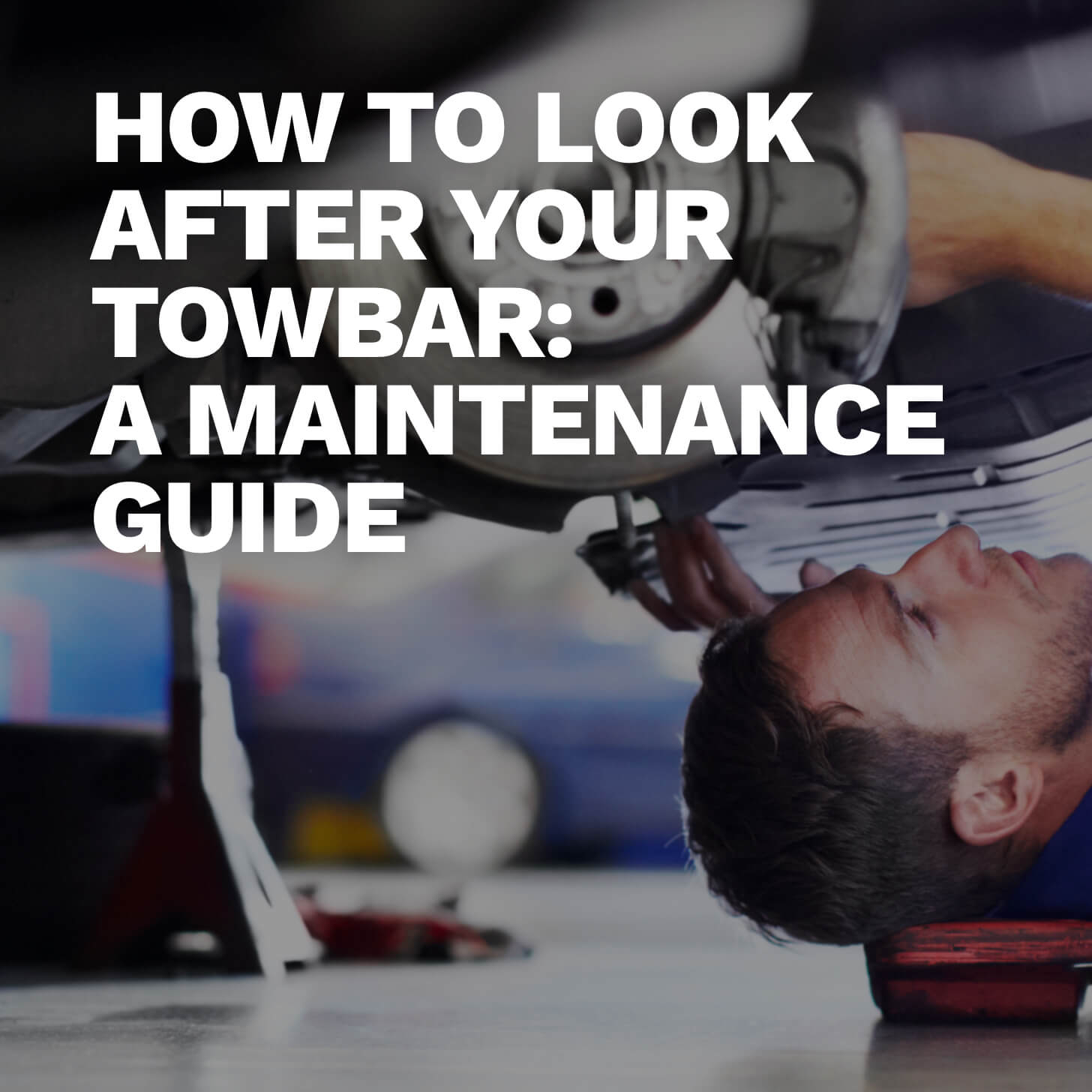
There are different types of towbar available. These are fixed flange towbars, detachable flange towbars, fixed swan neck towbars, detachable swan neck towbars, retractable towbars and receiver hitch towbars. While all types of towbar are low maintenance, there are certain things you should do to maximise longevity and ensure that they remain safe to use.
If you're wondering how to look after your towbar, so it's always in the ideal conduction to tow, you're in the right place. This blog will cover the following:
- How to Keep your Towbar in Perfect Towing Condition
- Do a Regular Inspection
- Look For Rust
- Don't Forget Your MOT
- Regular Tow Bar Maintenance
- Don't Do These Things
How to Keep your Towbar in Perfect Towing Condition
Here at Witter Towbars we have designed and manufactured the strongest towbars for your vehicle and tested them to their limits. However if your towbar isn't used or cared for correctly, you can cause it damage.
We want to help you keep towing for as long as possible without coming across any hiccups along the road... that's why we've put together some tips on how to keep your towbar in perfect towing condition.
Do a Regular Inspection
After towbar installation, your towbar is unlikely to need any attention. However, over time, wear and tear may occur, which is why towbars require regular inspection. So, what should you look for?
Check All Tow bar Components
It's important to check every component of your towbar regularly:
Visually assess the towbar for any signs of corrosion, fractures or damage.
- Check the mounting of your towbar is secure, including any supports and fixings such as nuts and bolts. Inspect the locking devices, paying careful attention to split pins. If you have a detachable towbar, inspect the tow ball.
- Check for any looseness between the tow ball arm and the receiver socket.
- Check any levers and flexible joints by wiggling each component. Each component should still feel tightly fitted.
Look For Rust
Towbars need to be robust to guarantee safety during use, which is why they are made from strong metal, such as steel. However, one problem this poses is that metal is susceptible to rusting. So, what causes rust to form?
Moisture
Cold and wet environments cause iron and oxygen to mix in the metal of the towbar, causing the chemical reaction that results in rust. If left untreated, the rust continues to build up and spread.
Abrasion
Abrasion happens when grit, dirt and debris from the road cause friction, wearing down the coating of the towbar. If a towbar is already rusty, abrasion can quicken the process of corrosion.
Serious rusting, coupled with abrasion can decrease the reliability of your towbar, even resulting in it falling off completely. So, while small amounts of rust is not a major cause of concern, it will become a serious safety issue if left untreated.
If you notice any rust beginning to appear, take off any rusty flakes with sandpaper or a wire brush. Then, apply a primer to protect from future rusting. You should also repair any damage to the paint finish.
Clean the Towball
You should clean your tow ball and hitch as any grease on these components attracts excess grit, resulting in abrasion. A tow ball should only be cleaned using products such as brake cleaner or white spirit.
Don't Forget Your MOT
Your towbar is inspected as part of your routine MOT test under section 6 'Body, Structure and Attachments.' All types of towbar fitted to the rear of any vehicle will be included, however, towbars fitted to motorcycles are not included.
A towbar inspection as part of an MOT consists of a visual assessment, focusing on any excessive corrosion, fractures and damage. The assessor will look for wear and tear of the tow ball, jaw, hook or eye and will check that all nuts, bolts and pins are secure.
Checks will also take place to confirm that the towbar is securely attached to the vehicle structure, including mountings, supports and fixings. It's important to note that electrical wiring is not part of an MOT test.
Regular Tow Bar Maintenance
Witter have designed and manufactured the strongest towbars and tested them to their limits. However if your towbar isn't used or cared for correctly, you could cause damage.
To keep you towing for as long as possible, here are some tips on how to keep your towbar in perfect towing condition.
After 500 miles of towing:
- Re-torque* all fixings to the values specified in your installation handbook that came with your towbar
- Repair any damage and add any additional coatings to the paint finish
- Replace any damaged components
*If you do not have a torque wrench then these are readily available, especially in automotive, DIY and machinery stores and are relatively inexpensive and are a real safety investment.
Take your towbar to a local garage for a check up if:
- If your vehicle is involved in an accident, incident or collision with another vehicle or object
- If an abnormal load is applied to the Towbar
- If the Towbar has been damaged, misused or neglected
- If any changes, modifications or repairs have been carried out to the Towbar
- If the Towbar is transferred to another vehicle
Don't Do These Things
While some parts of towbar maintenance require hands-on activity, you can also care for your towbar by avoiding the following:
Don't tow more than your vehicle's load limit, including the nose weight.
If you have a detachable towbar, do not grease the tow ball- only the receiver end. Never neglect to have a professional fitter inspect your towbar if you're involved in an accident.
Remember, if you need professional help or advice when it comes to fitting a towbar, you can contact your nearest Witter Service Centre here.
